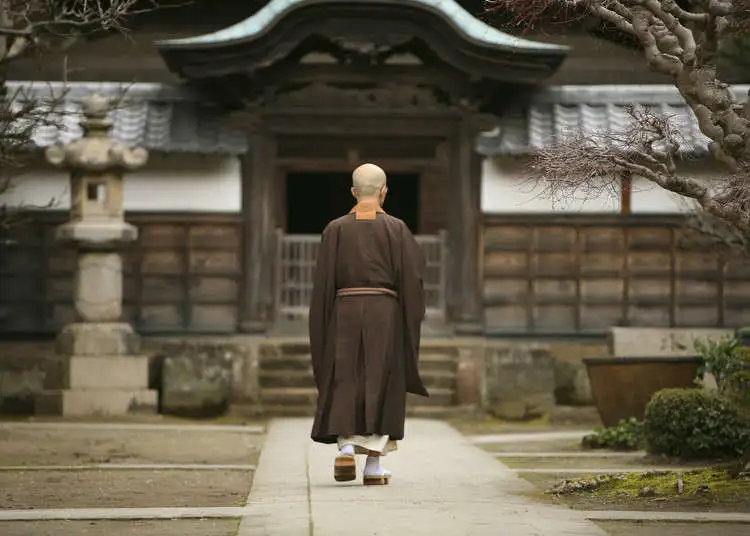In a chaotic and fast-paced world, many seek solace and tranquility. One path that has guided countless individuals toward inner peace and enlightenment is Zen Buddhism.
Originating in ancient China and later flourishing in Japan, Zen Buddhism offers profound insights and practical techniques for achieving harmony within ourselves and with the world around us. In this article, we will delve into the essence of Zen Buddhism, explore its key principles, and shed light on how it can enrich our lives.
Understanding Zen Buddhism:
At its core, Zen Buddhism is not just a religion; it’s a way of life, a philosophy, and a practice all rolled into one. Zen encourages direct experience and emphasizes the importance of mindfulness, meditation, and self-reflection. It transcends religious dogma and focuses on the present moment, awakening us to the true nature of reality.
1. Historical Background:
To truly appreciate Zen Buddhism, we must understand its roots. Originating in China during the 6th century, Zen was heavily influenced by Indian Buddhism, Taoism, and Confucianism. It was later introduced to Japan in the 12th century, where it found fertile ground to flourish and develop its distinct Japanese Zen traditions.
2. Key Principles:
Zen Buddhism is often associated with simplicity, stillness, and the pursuit of enlightenment. Let’s explore some of its key principles:
- Zazen: At the heart of Zen practice lies zazen, or seated meditation. This practice involves sitting still, focusing on the breath, and observing thoughts without judgment. Zazen cultivates mindfulness, helping us become fully present and aware of our thoughts, sensations, and emotions.
- Satori: Satori refers to the sudden awakening or enlightenment experienced through Zen practice. It is a direct and intuitive realization of one’s true nature, free from conceptual thinking and attachment. Satori can be described as a profound and transformative experience, often described as a “moment of clarity.”
- Koans: Zen masters often use koans, paradoxical riddles or statements, to provoke deep contemplation and insight. These enigmatic phrases defy logical reasoning, pushing practitioners to transcend ordinary thinking and tap into their intuitive wisdom.
- Everyday Mindfulness: Zen encourages the integration of mindfulness into everyday activities. Whether it’s drinking tea, washing dishes, or walking, Zen practitioners aim to bring their full attention and presence to each moment, embracing the ordinary as extraordinary.

3. Zen Buddhism and Meditation:
Meditation is a fundamental aspect of Zen practice, serving as a gateway to self-discovery and enlightenment. Zen meditation techniques include:
- Breath Awareness: Focusing on the breath calms the mind and anchors our awareness in the present moment. Observing the breath allows us to let go of distracting thoughts and enter a state of deep concentration.
- Walking Meditation: Zen practitioners also engage in walking meditation, known as kinhin. It involves slow, mindful walking, synchronizing each step with the breath and maintaining awareness of the body’s movements.
- Mindful Eating: Zen teachings emphasize mindful eating, known as Oryoki. Practitioners eat slowly and attentively, savoring each bite and fully experiencing the taste, texture, and aroma of the food.
- Zen Buddhism and Daily Life: Zen isn’t confined to the meditation cushion; it extends into all aspects of daily life from simple tasks such as drinking tea, cleaning, and walking.
Where To Learn Zen Buddhism?
If you are interested in learning Zen Buddhism, there are various avenues available to deepen your understanding and practice. Here are some common places where you can learn Zen Buddhism:
- Zen Centers and Monasteries: Zen centers and monasteries are dedicated spaces where Zen practitioners gather for meditation, study, and guidance. These places often offer meditation retreats, workshops, and classes led by experienced teachers. They provide a supportive community and a structured environment to learn and practice Zen Buddhism.
- Meditation Groups and Sanghas: Meditation groups or sanghas are communities of Zen practitioners who come together to meditate and study. These groups may meet in community centers, yoga studios, or private homes. Joining a meditation group can provide a supportive environment for learning and practicing Zen Buddhism, often with the guidance of an experienced practitioner or teacher.
- Online Resources: In the digital age, there is a wealth of online resources available for learning Zen Buddhism. You can find guided meditations, instructional videos, articles, and forums where you can connect with fellow practitioners and teachers. Websites of established Zen centers often offer online courses and resources to support your learning journey.
- Books and Literature: There is a vast range of books and literature on Zen Buddhism, written by renowned Zen masters and scholars. These books can provide valuable insights into Zen philosophy, meditation techniques, and the lived experiences of Zen practitioners. Look for recommended books on Zen Buddhism and explore different perspectives to deepen your understanding.
- Retreats and Workshops: Zen retreats and workshops offer immersive experiences that allow you to dive deeper into Zen practice. Retreats typically involve an extended period of silent meditation, teachings from experienced teachers, and opportunities for individual guidance. These intensive retreats can be transformative and provide a dedicated space for deepening your understanding of Zen Buddhism.
Remember that learning Zen Buddhism is not limited to a single method or place. It is a personal journey that unfolds over time. It is advisable to explore different resources, engage with a supportive community, and seek guidance from experienced teachers to enhance your understanding and practice of Zen Buddhism.
Differences of Zen Buddhism in different countries:
Zen Buddhism has evolved and adapted in different countries, leading to some variations in its practice and expression. Here are some key differences of Zen Buddhism in different countries:
- Japanese Zen (Soto and Rinzai): Japan is renowned for its Zen traditions, with two main schools, Soto and Rinzai, dominating the Zen landscape. Soto Zen emphasizes “shikantaza,” or silent sitting meditation, with an emphasis on “just sitting” and allowing thoughts to arise and pass without attachment. Rinzai Zen places more emphasis on “koan” practice, which involves contemplating paradoxical questions to transcend conceptual thinking.
- Chinese Chan: The precursor to Japanese Zen, Chinese Chan emphasizes direct experience and the use of “hua-tou” (critical phrases) and “gong-an” (koans) to provoke insight. Chinese Chan practitioners often engage in intensive meditation retreats and emphasize the importance of the teacher-student relationship.
- Korean Seon: Korean Seon is similar to Chinese Chan and Japanese Zen, with a focus on meditation and the use of “hwadu” (critical phrases) to investigate the nature of mind and reality. Seon practice often involves “hwadu” meditation, “kong-an” (koan) practice, and silent meditation retreats.
- Vietnamese Thien: Thien is the Vietnamese adaptation of Chan Buddhism. It combines elements of Chinese Chan and Vietnamese cultural influences. Thien practice incorporates meditation, mindfulness, and compassionate action. The Plum Village tradition, founded by Thich Nhat Hanh, is a well-known Vietnamese Thien lineage that emphasizes mindfulness in everyday life.
- Western Zen: Zen Buddhism has gained popularity in the West, and Western practitioners have established Zen centers and communities that incorporate Zen teachings and practices within their cultural context. Western Zen often combines Zen meditation techniques with contemporary approaches to spirituality and psychological well-being.
While the core principles of Zen Buddhism remain consistent across different countries, variations in cultural influences, historical developments, and teacher lineages have led to different expressions and practices of Zen. It is important to recognize and respect these regional differences while honoring the underlying essence of Zen’s teachings.
Conclusion:
Zen Buddhism offers a transformative path to inner peace and self-discovery. Through practices like meditation, mindfulness, and embracing the present moment, we can transcend the noise and chaos of modern life. By exploring the historical background, key principles, and practical applications of Zen Buddhism, we have gained insights into its profound wisdom. Whether you seek serenity, clarity, or a deeper connection with yourself, the teachings of Zen Buddhism can guide you on a journey toward a more fulfilling and enlightened existence.
Remember, Zen is not a destination; it is a continuous exploration, an ongoing process that unfolds throughout our lives. As Zen master Shunryu Suzuki beautifully said, “Zen is not some kind of excitement, but concentration on our usual everyday routine.” May you find peace, joy, and enlightenment on your own Zen path.
Originally posted 2023-04-02 20:08:18.



